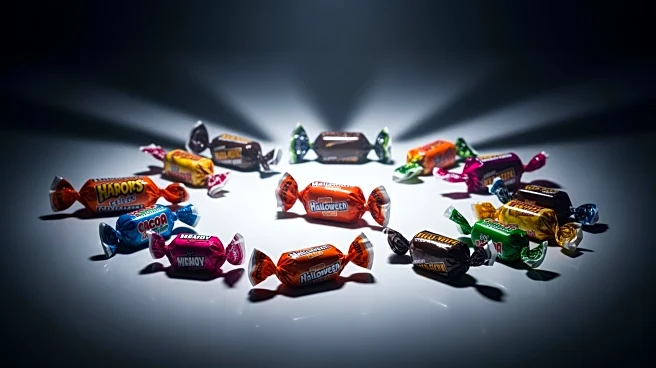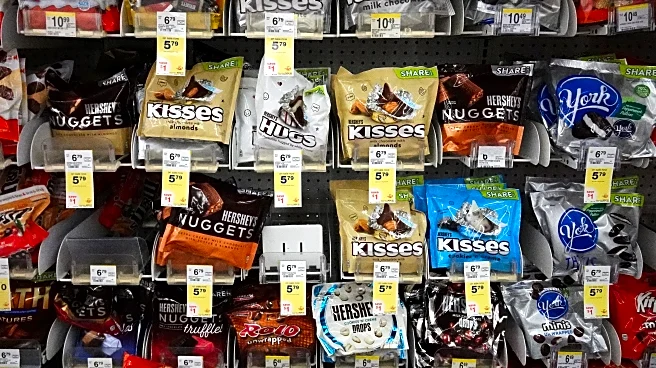What's Happening?
The rising cost of cocoa is affecting chocolate makers and candy producers, leading to changes in product offerings and pricing strategies. Specialty chocolate makers like Escazú Chocolates are paying
higher prices to farmers in Latin America, while larger companies such as Hershey are reducing product sizes to maintain profit margins. The increase in cocoa prices has resulted in less chocolate content in products, with some bars now containing more sugar. This trend is expected to continue, impacting consumer choices during the Halloween season.
Why It's Important?
The shift in chocolate production due to rising cocoa prices has significant implications for the confectionery industry and consumers. As companies adjust their strategies, consumers may face higher prices and altered product compositions, affecting purchasing decisions. The economic impact extends to farmers in cocoa-producing regions, who may benefit from higher payments but also face challenges due to climate-related harvest issues. The broader market dynamics could influence future pricing and availability of chocolate products, affecting both specialty and mass-market segments.
What's Next?
Consumers can expect continued adjustments in product offerings and pricing strategies from chocolate makers. Companies may explore alternative ingredients or flavors to mitigate costs, while specialty producers might focus on sustainable sourcing and ethical practices. The industry will likely monitor cocoa price trends and adapt accordingly, potentially influencing holiday season sales and consumer preferences. Stakeholders, including farmers and retailers, will need to navigate these changes to maintain profitability and market share.
Beyond the Headlines
The rising cocoa prices highlight the interconnectedness of global supply chains and the impact of climate change on agricultural production. Ethical considerations in sourcing and fair trade practices may gain prominence as companies and consumers become more aware of the challenges faced by cocoa farmers. The trend towards less chocolate content could also spark discussions on product quality and consumer expectations, influencing future industry standards.













